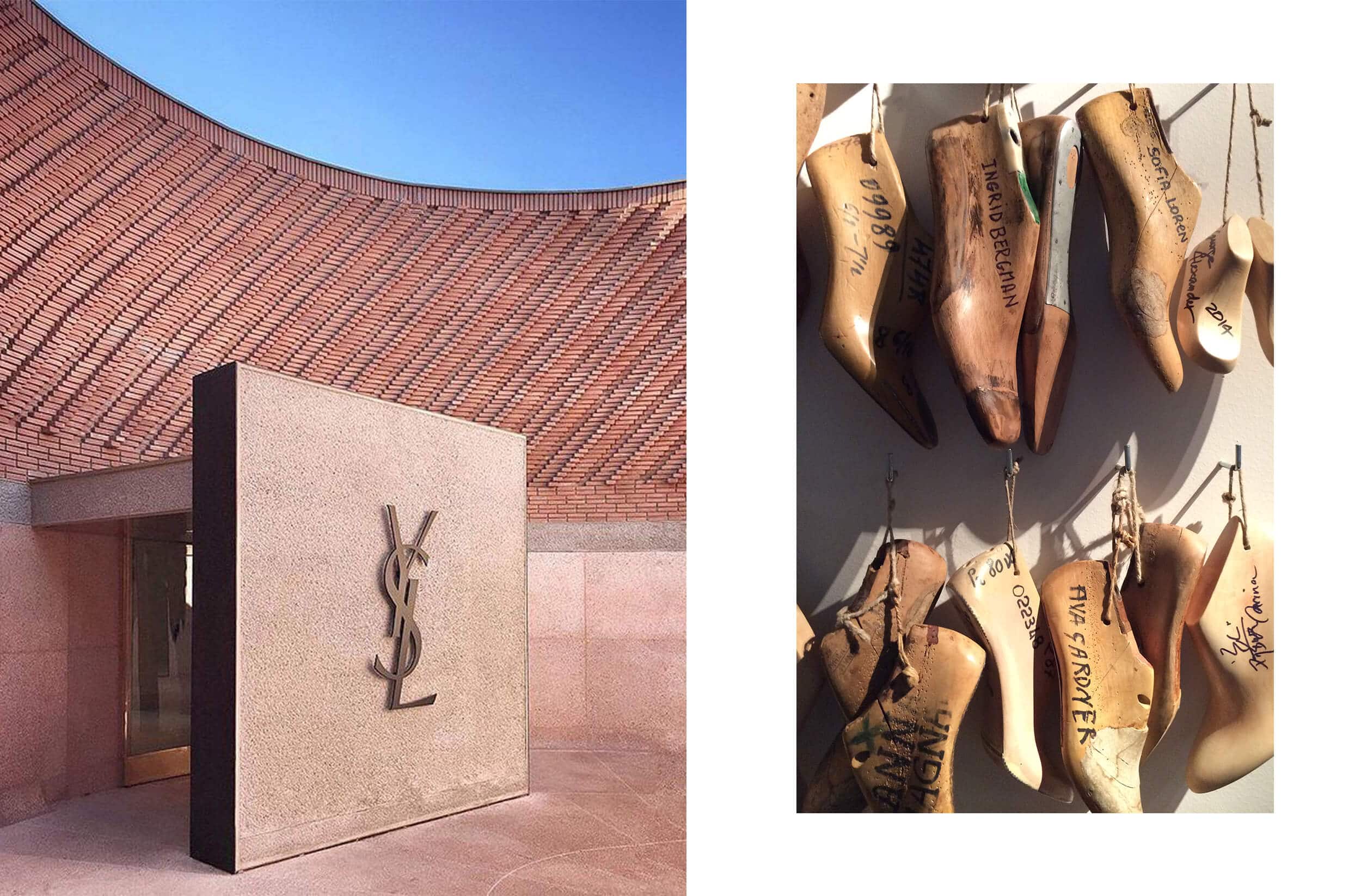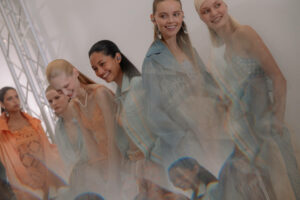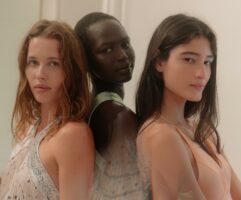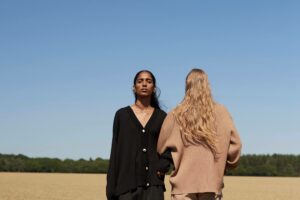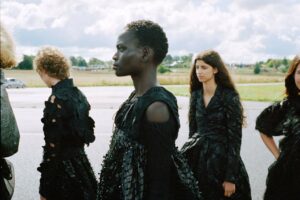If we talk about fashion museums, we immediately think about the Met in New York, where every year the famous Met Gala keeps us glued to the screen to see all the looks worn by the celebs, the Victorian and Albert Museum in London, or the collection of the Louvre in Paris dedicated to fashion. What other less-known but equally interesting museums are there worth visiting (as soon as we have the chance to)? We have made a list of some of the most beautiful and breathtaking fashion museums in the world to immerse ourselves in a complete experience of fashion!
Museums dedicated to great designers
Christian Dior Museum, Granville
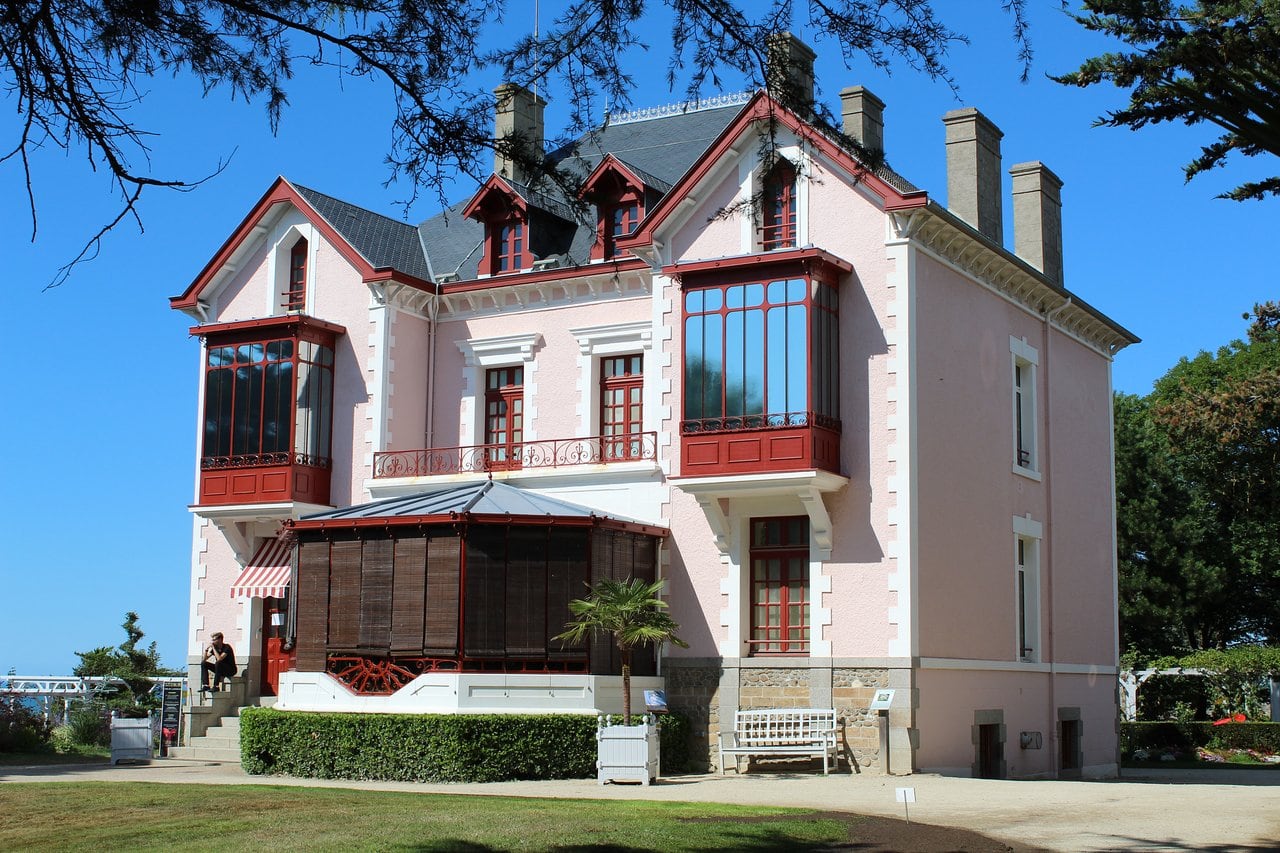
In Normandy, the Christian Dior Museum is dedicated to one of the most famous stylists of all time, who made the French haute couture famous. Located on the top of a cliff at the entrance to the city, overlooking the Anglo-Norman Islands, inside Dior’s childhood home called Villa Les Rhumbs, (a place that has influenced his life and his style over time) and “designed” by the curator Jean-Luc Dufresne, cousin of the couturier, the museum hosts numerous exhibitions, mainly themed. For example, the inaugural exhibition was dedicated to the actresses dressed by the designer, such as Olivia de Havilland, Ava Gardner, Elizabeth Taylor, and Marlene Dietrich. Nowadays, the Christian Dior Museum is still the only “Musée de France” entirely dedicated to a couturier.
Salvatore Ferragamo Museum, Florence
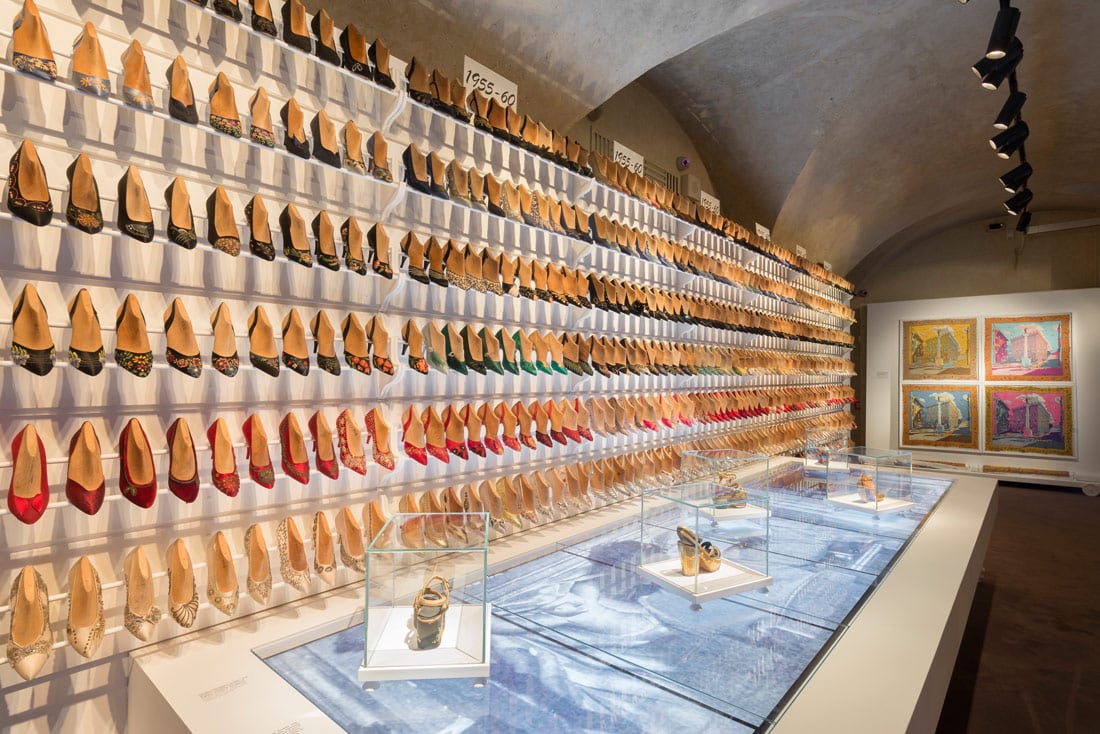
Inaugurated in 1995, the museum that documents the creative work of Salvatore Ferragamo in the field of leather goods and footwear, and that shows the relationship between the company, art, design, and costume, extends in seven rooms: the first two are dedicated to the history of the Ferragamo house, where more than 14,000 garments are exhibited in rotation in the archive of the museum, while the others are occupied by temporary exhibitions. The permanent collection of shoes follows the entire range of activity of Salvatore Ferragamo (from his return to Italy in 1927 until his death in 1960) and is rich in famous models created for stars such as Marilyn Monroe and Audrey Hepburn, and their particularity in the use of materials (such as candy wrappers); moreover, it includes the production of footwear after the death of Salvatore Ferragamo up until the present day. Finally, there are also drawings, documents, and photographs that testify to the work of the designer.
Armani/Silos, Milan
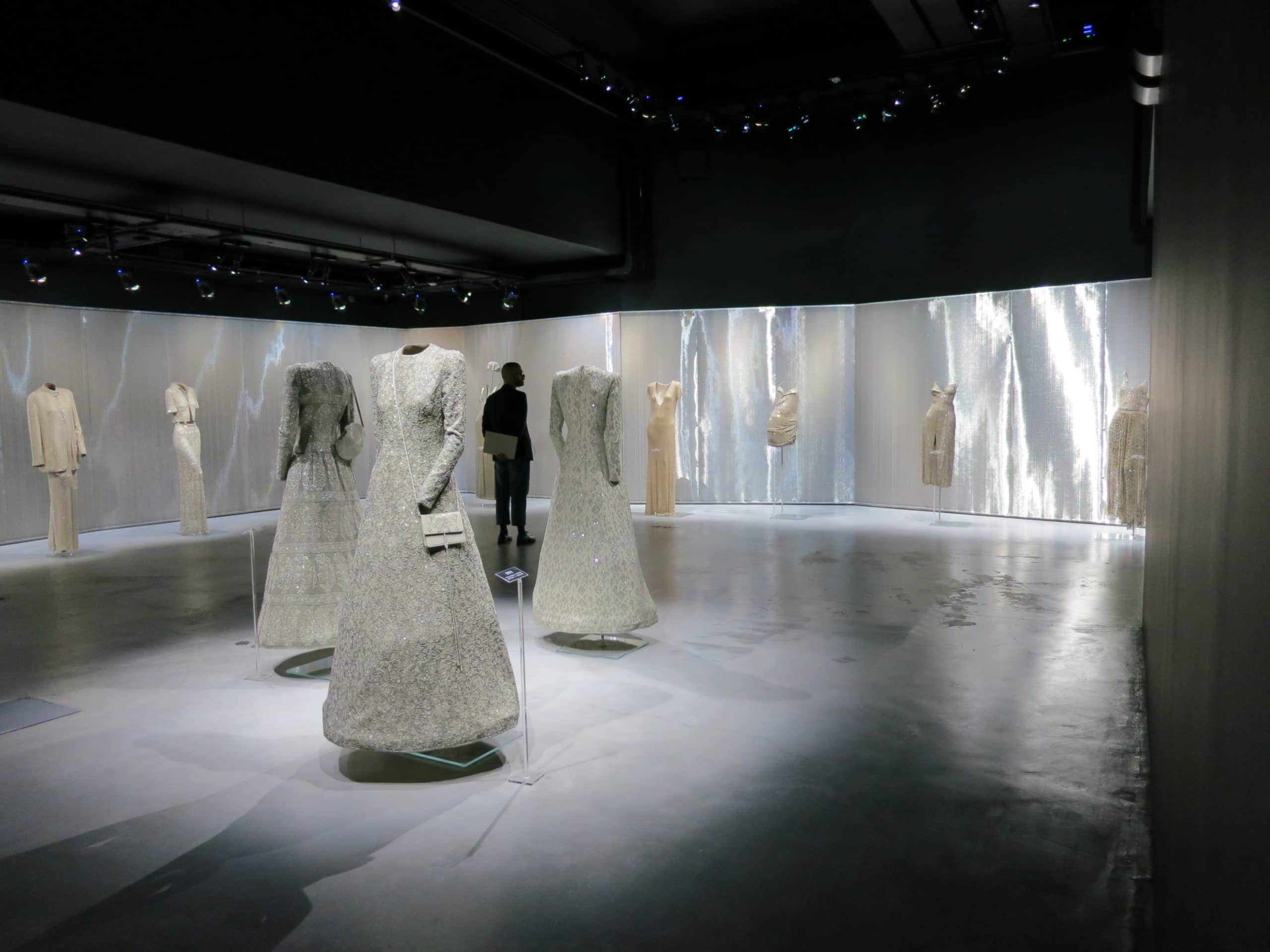
The Armani/Silos Museum was established in Milan in 2015, where the grain storehouse of a large multinational industry was originally located, to celebrate the 40 years of the designer’s career. Conceived by Armani himself, who also actively followed the project, the building is divided into 4 floors with a selection of creations divided according to the three main themes that retrace the creative work of the designer and that continue to influence his collections: these are respectively Androgino, which “sweeps the original concepts of androgyny preserving the taste of femininity and elegance that always shows measure and discretion, known for its neutral colors and fabrics revisited the male tradition,” Etnie, which follows the collections influenced by non-Western cultures and by the fascinating distant ethnic groups, and Stars, which has as its focal point the relationship between the designer and the world of cinema, of the show and the stars who wore his creations over time. Moreover, during the visit, it is also possible to have access to the digital archive where sketches, technical drawings, and materials related to the ready-to-wear and high fashion collections are gathered, and about 1000 outfits divided by seasons and collections, 2000 garments and accessories, numerous sketches, fashion show and backstage videos, images taken from Emporio Armani Magazine and photos of the most famous advertising campaigns.
Gucci Garden, Florence, Italy
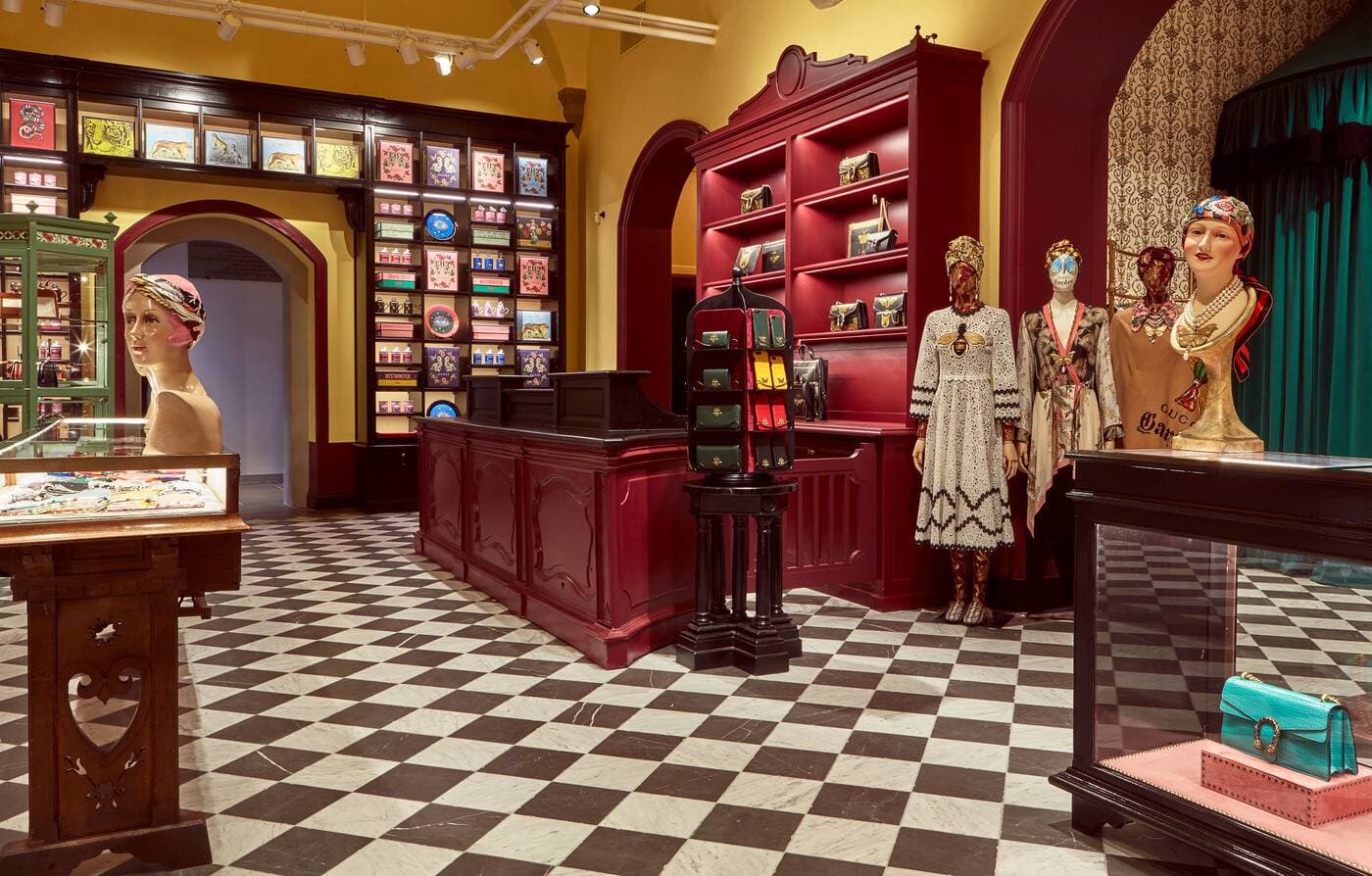
Located inside the historic Palazzo della Mercanzia in Florence and designed by creative director Alessandro Michele, the Gucci Garden Galleria, curated by Maria Luisa Frisa, embodies the new vision of the House and pays homage to the Gucci archive. Extending over two floors, it opens with the Guccification room, dedicated to Gucci’s double G and more modern forms of expression, such as the Guccighost by Trouble Andrew, or the names coined by Alessandro Michele on social media such as Guccification, Guccy, and Guccify. The Paraphernalia rooms are focused on the codes of the House, and Cosmorama is dedicated to the relationship between the House and its historic and iconic customers, with a focus on the heraldic element. On the second floor, there are the De Rerum Natura rooms, representative of Alessandro Michele’s passion for animals and gardens, and Ephemera, where you can retrace the history of the House through videos and memories.
Cristobal Balenciaga Museum, Getaria
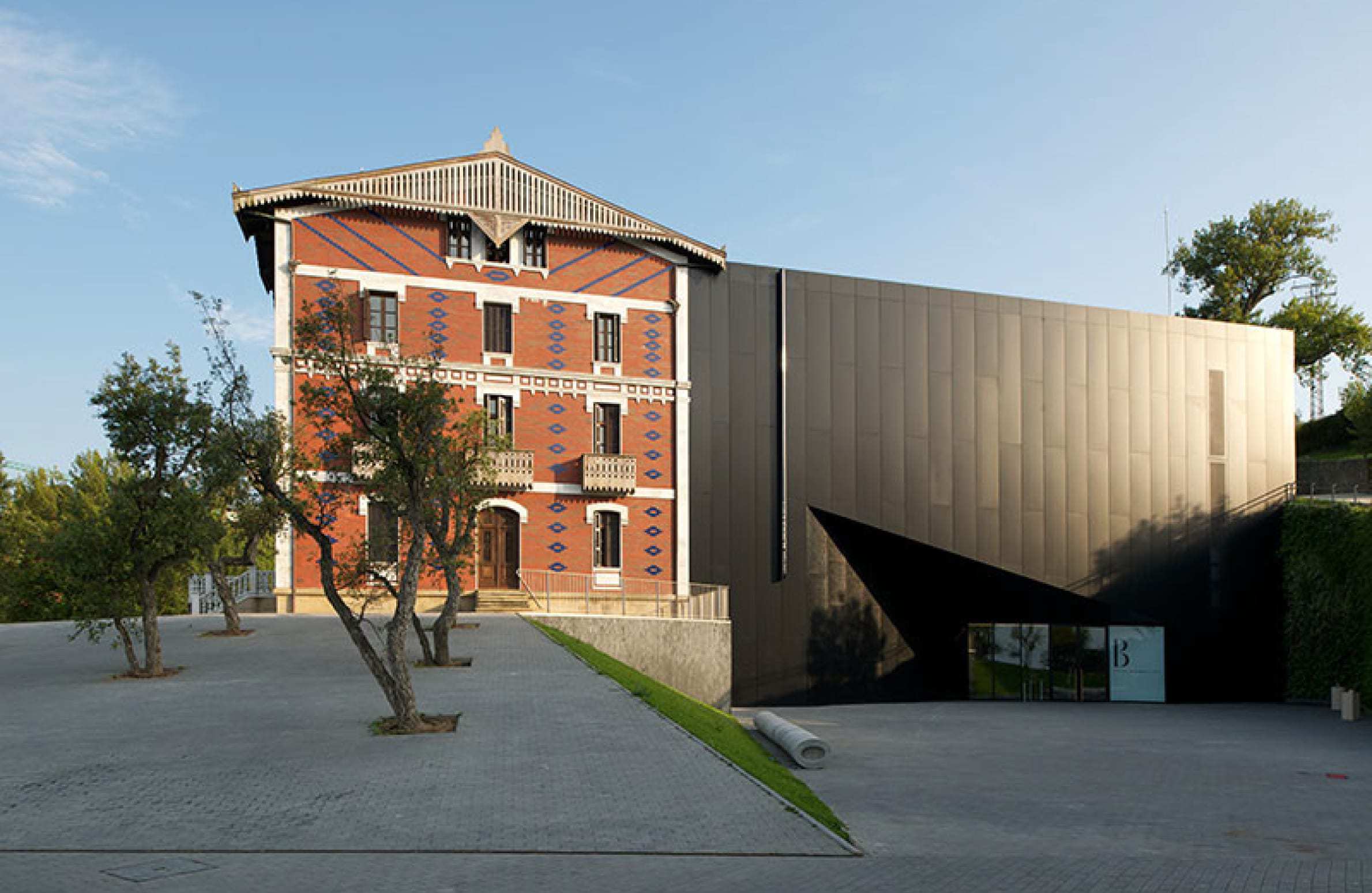
Designed by Cuban architect Julián Argilagos and designer Rolando Paciel González, the Cristobal Balenciaga Museum looks like a modern structure with high ceilings, large windows, and incredible perspective tricks created by the ferrous materials that characterize the structure. It contains over 1200 designer clothes that, due to the deterioration of fabrics and colors, cannot remain on display for too long. As a result, it is limited to a collection of exposures of 100 pieces at a time, which are regularly updated thanks to donations and loans.
Yves Saint Laurent Museum, Marrakech

In October 2017, the museum dedicated to the great couturier by Pierre Bergé, his life and work companion, opened its doors. Located in Rue Yves Saint Laurent, the museum building, a majestic building characterized by cubist lines, marble and terracotta bricks, covers a permanent exhibition space of about 400 square meters and also includes a temporary exhibition space, a library with over 6,000 volumes, a library whose interiors were designed by Yves Taralon, an auditorium/cinema where the story of Yves Saint Laurent and a café are told. The collection includes 5,000 items of clothing and 15,000 high fashion accessories that, because of their reasonableness, are all subjected to quarantine and disinfection procedures and then labeled, inventoried, photographed, restored if necessary, and, only as a last step, exposed.
Museums of Fashion History
Museum of FIT (MFIT), New York
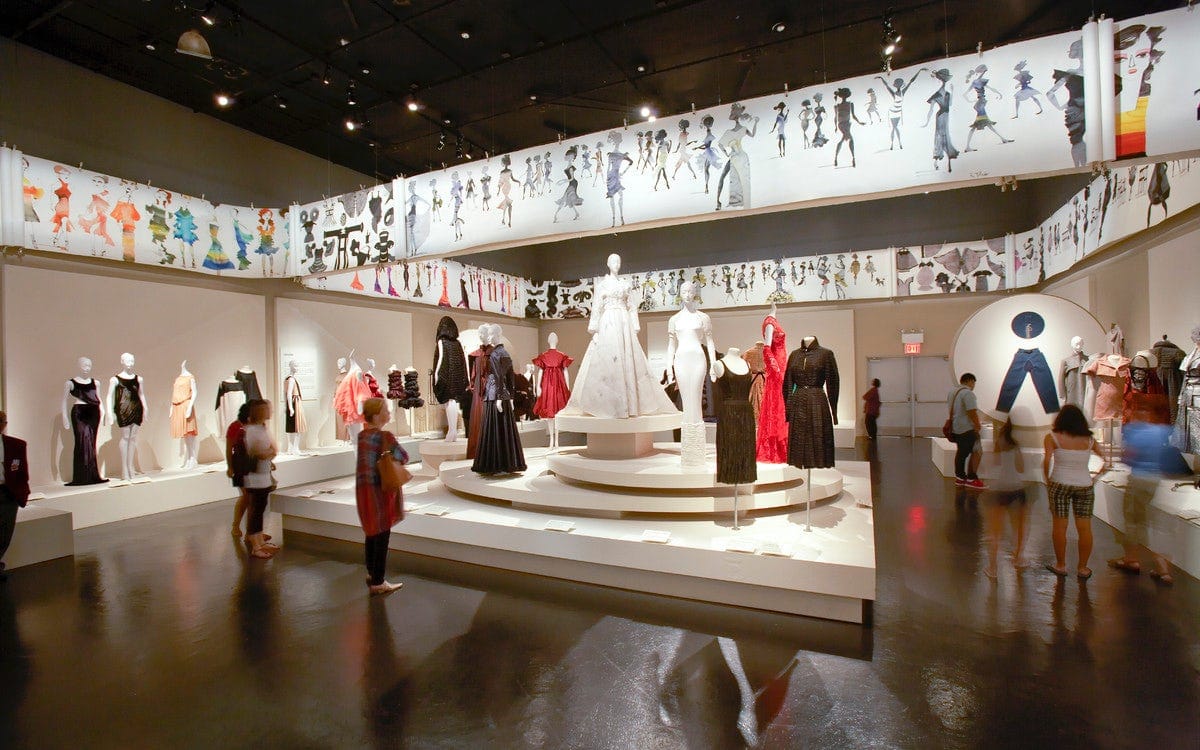
Founded in the late 1960s, it boasts a permanent collection of 50,000 dresses and accessories from the 18th century to the present day by leading fashion designers such as Adrian, Balenciaga, Chanel and Dior, with an emphasis on clothes, accessories and techniques that have marked the history of fashion, with particular attention to the contemporary avant-garde style. The museum is divided into three galleries: the lower one is dedicated to special exhibitions, the gallery of the history of fashion and fabric located on the main floor has a rotation of about 200 objects belonging to the permanent collection, while finally the gallery FIT, located on the main floor, is dedicated to exhibitions of teachers and students, such as students of the “School of Graduate Studies” of FIT, who collaborate with the museum to set up an exhibition once a year. The museum’s mission is, in fact, to “educate and inspire a diverse audience with exhibitions and innovative projects that promote knowledge of fashion” and is known for its innovative and award-winning special exhibitions like “The Corset: Fashioning the Body,” which explored the most sensual garments in the history of fashion, and “London Fashion,” which received the first Richard Martin Award for Excellence in “The Exhibition of Costume from the Costume Society of America.”
FIDM, Los Angeles
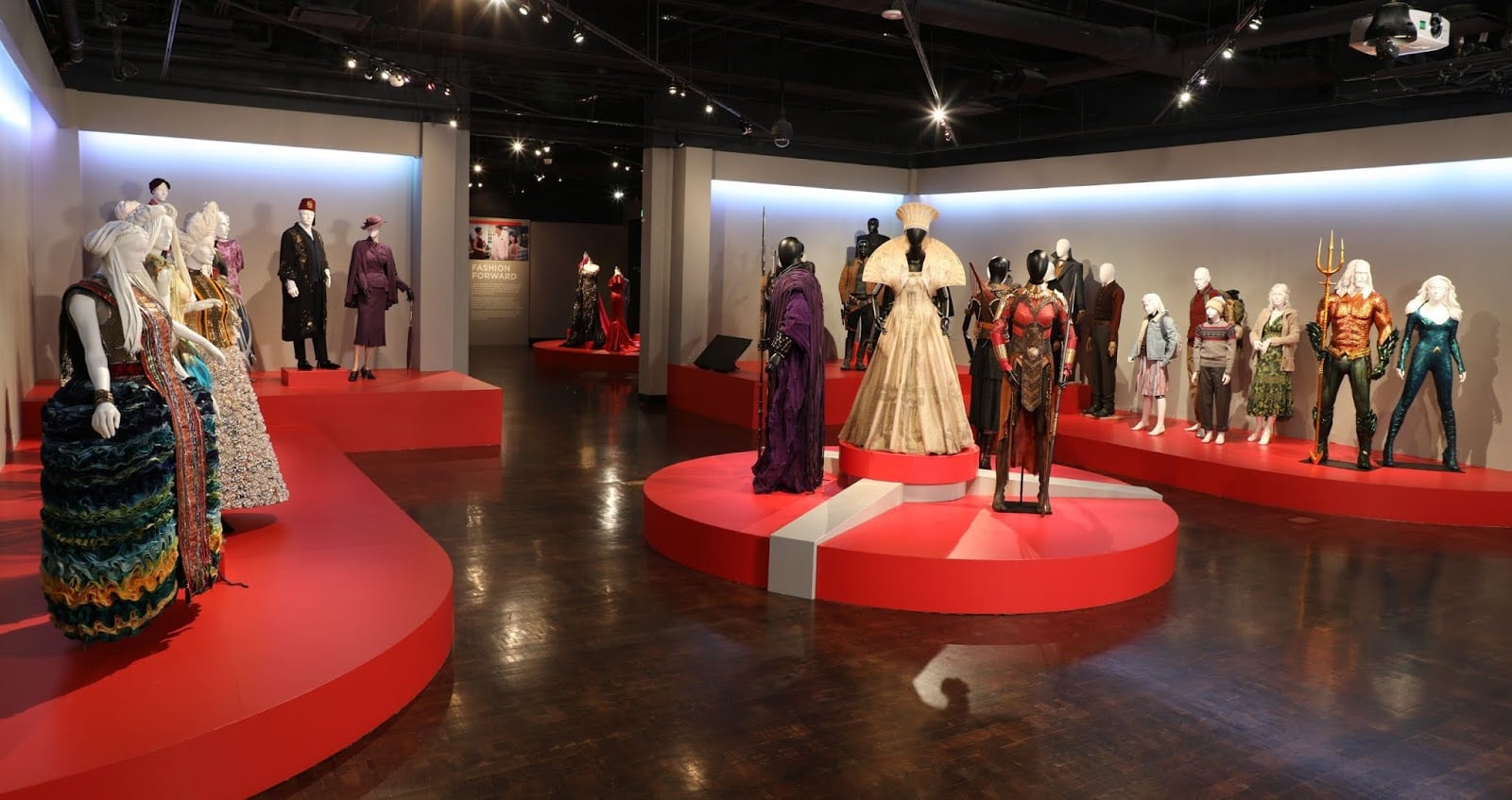
The museum is located within the Los Angeles campus of the “Fashion Institute of Design and Merchandising” and boasts a collection of over 12,000 costumes, 15,000 fashion items, and 200,000 artifacts from the Special Collections, plus other accessories and jewelry from the 18th century to date, not to mention the cinematic and theatrical costumes, such as the first Hollywood Costume Collection and more: also Haute couture, Parisian haute couture, ranging from popular and non-Western clothing, sample collections, fabrics, and photographs.
Fashion Museum, Bath

Founded by Doris Langley Moore, designer, and collector who donated his private costume collection to the city of Bath, it contains about 100,000 items ranging from Shakespeare’s time-decorated gloves to the “Dress of the Year” collection, for which a dress is chosen every year that represents the most important novelty of contemporary fashion and that then becomes part of the collection of the museum.
Bata Shoe Museum, Toronto
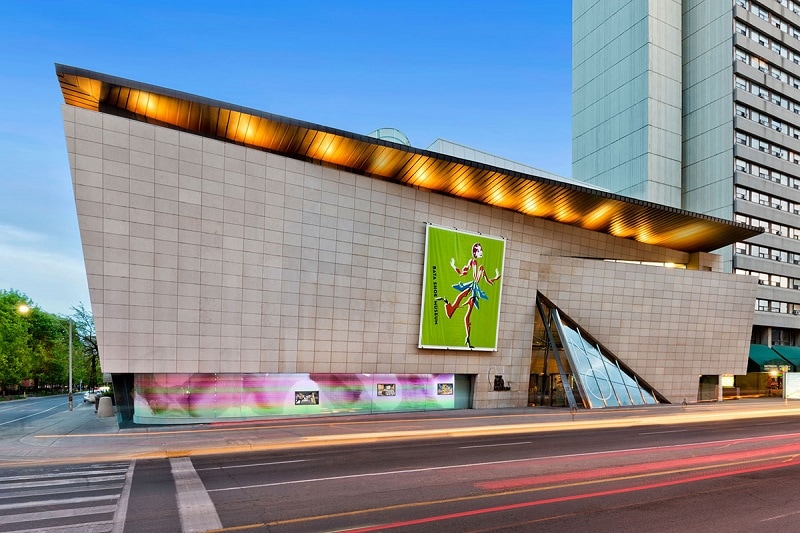
The Bata Shoe Museum (BSM) is known as the leading footwear museum in North America and regularly exhibits over a thousand shoes and related artifacts, selected from a collection of over 13,000 items, Most of them from the private collection of Sonja Bata, President of the Foundation. In 1979, when Madame Bata’s private collection had become too large for her home, the family established the Bata Shoe Museum Foundation, whose goal is to establish an international center for footwear research and celebrate style, the development and function of footwear in its four galleries, with exhibitions ranging from Chinese shoes with bandaged feet to ancient Egyptian sandals.
Hendrikye Bags Museum, Amsterdam
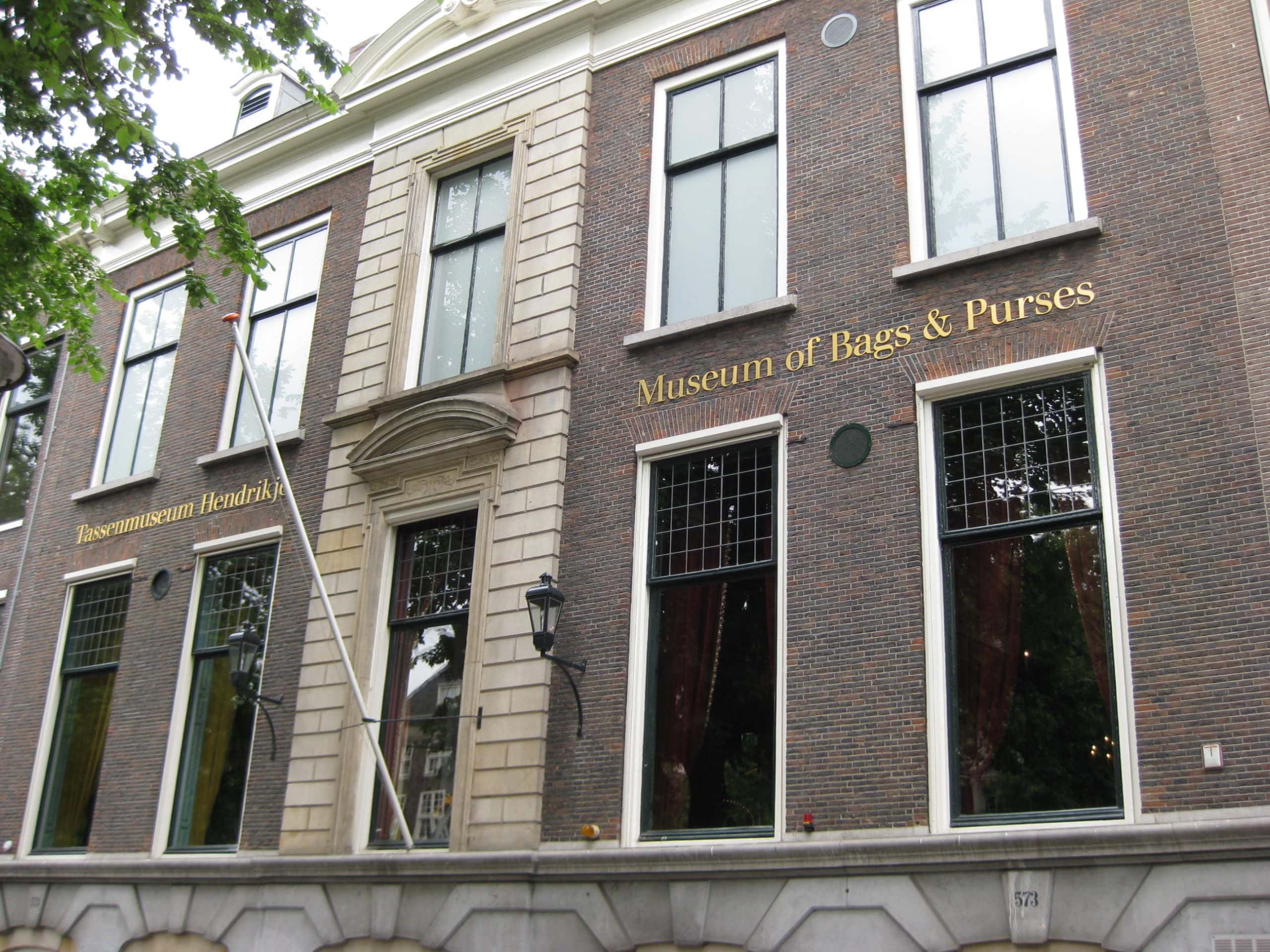
Again on the theme of museums dedicated to accessories, we find the Hendrikye Bags Museum, a private museum dedicated to the history of handbags for women in Western culture. Located on the Herengracht, in Amsterdam, it was built thanks to the donation of the personal collection of Hendrikje Ivo and was then renovated in 2007: its areas have been divided by historical periods ranging from the late Middle Ages to the present day. The collection consists of more than 4,000 bags and there are also models by contemporary designers such as Paco Rabanne, Yves Saint-Laurent, Gucci, Hermès, Dolce & Gabbana, and the evening bag by Versace, worn by Madonna at the premiere of the film “Evita.”
Fashion Museum, Kōbe
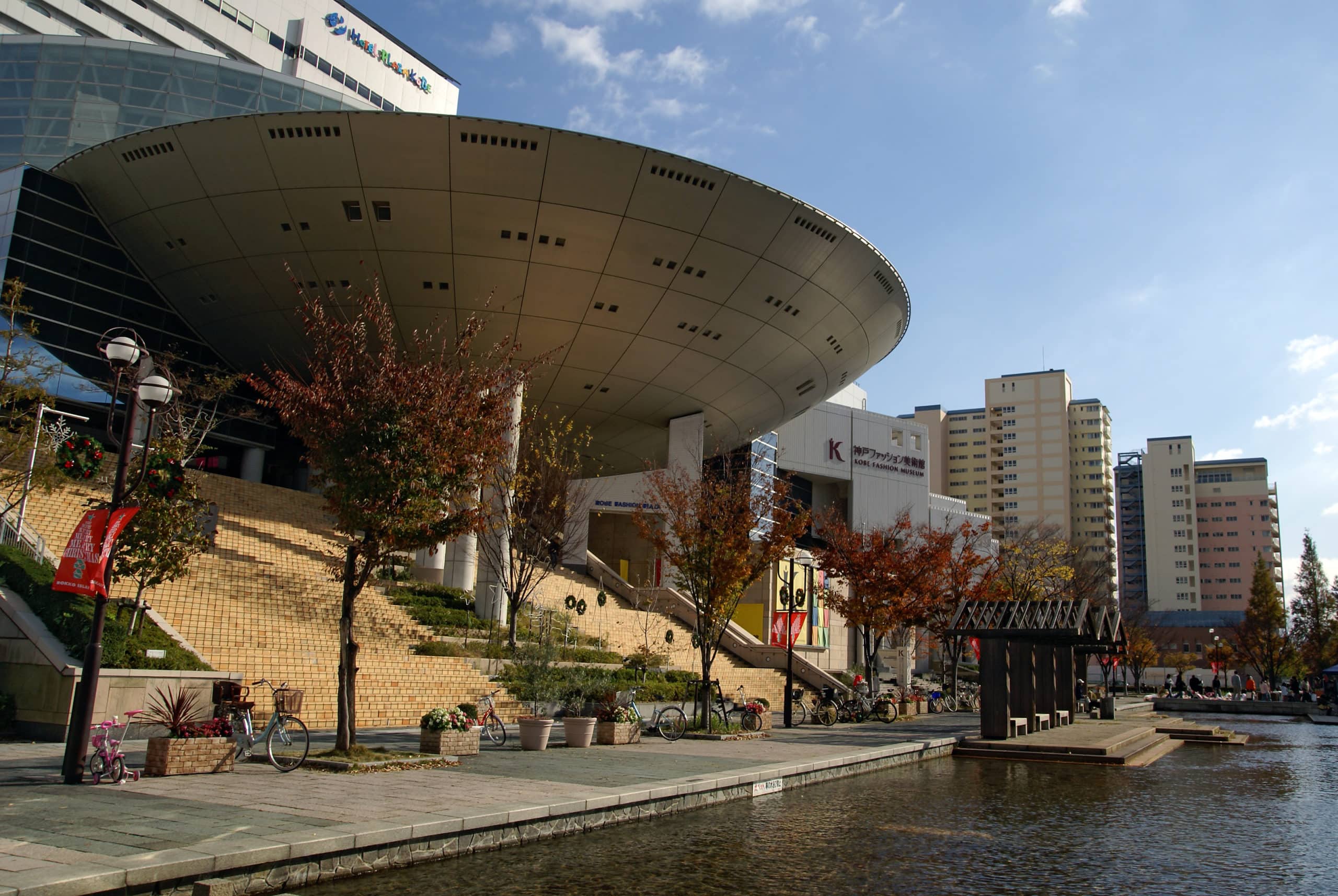
The Kōbe Fashion Museum is Japan’s first public museum specializing in fashion and is located on Rokkō Island in Kobe. Inaugurated in 1997, the building brings together the models of the main local tailors, whose work illustrates clothing from different historical points of view, from the costumes of the Kabuki theatre characters to the ethnic clothing worn by indigenous peoples around the world; on the third floor, there is a library containing about 28,000 books related to the theme of fashion and samples of high-quality fabrics.

